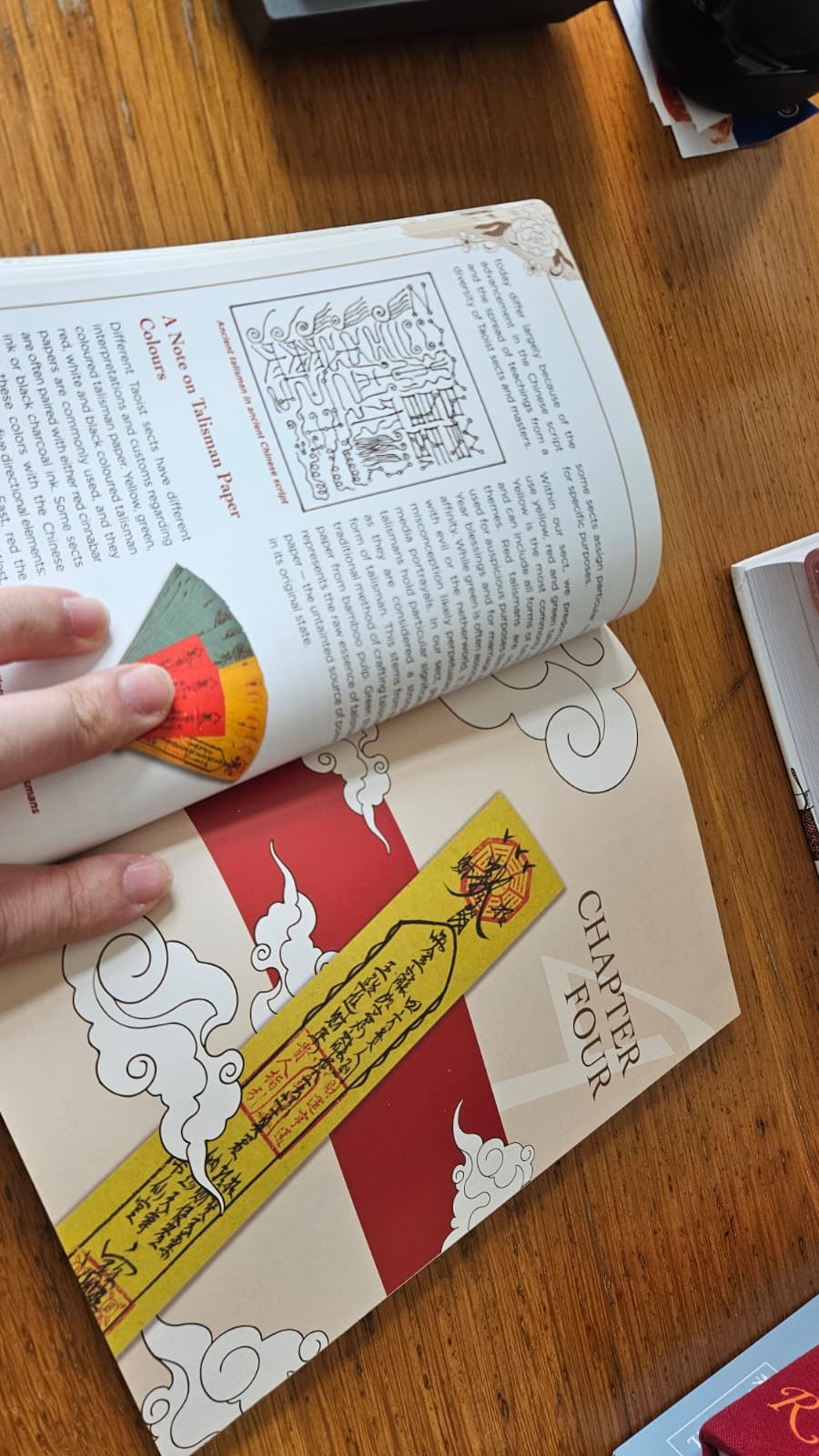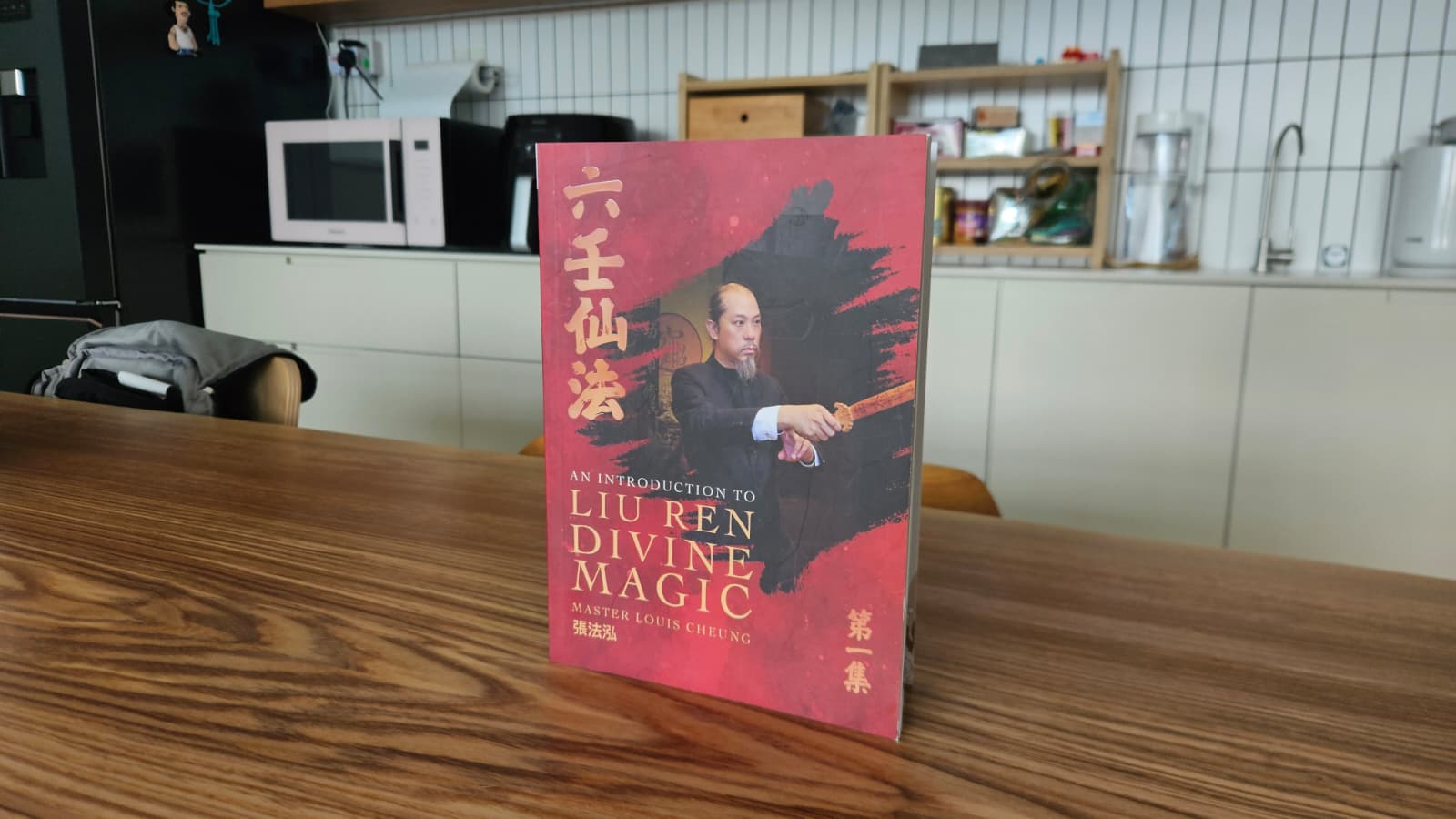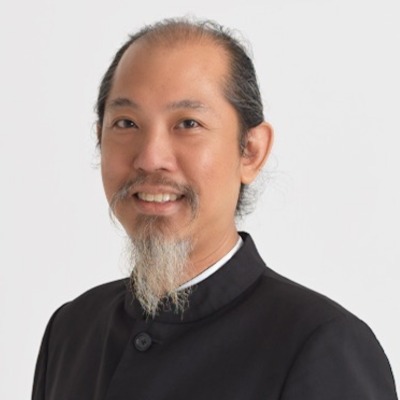Sometimes, a book stands out not because you understand it—but because you don’t.
Tucked between more familiar feng shui and astrology books, An Introduction to Liu Ren Divine Magic stood out on a quiet shelf. I had no deep background in feng shui, not even Taoist metaphysics, and barely an idea of what “Divine Magic” meant.
But something about this phrase pulls me in—unfamiliar, bold, and strangely inviting.
Curiosity got the best of me, and I’m glad it did.
Authored by Master Louis Cheung—a practitioner with extensive experience in Chinese metaphysics and traditional Taoist system—An Introduction to Liu Ren Divine Magic opens the door to a deeply traditional system for a modern, wider audience.
I’d like to think that the book found me, whilst not knowing what I’m looking for. As I picked it up, one big question popped into my head: What does this ancient tradition reflect, and why does it matter?
The book turns this curiosity into clarity. The answer? It is a much-needed map, making a highly traditional practice accessible, even for those outside the tradition.
A Friendly Guide to Seekers
Unfortunately, Liu Ren Divine Magic is often obscured by misconceptions and has limited information available in English, making it easy for curious readers to get lost and be led astray.
It is when Master Louis Cheung steps in and makes the Liu Ren Divine Magic accessible.
It does not preach. It invites.
For believers, beginners, and the curious.
It answers questions, clears up myths, traces the system’s evolution, and offers an honest guide in English.

The book contains many images as a visual guide for beginners.
Sprinkled with personal testimonies and clear, comprehensive explanations, it is a cultural guide on this often misrepresented practice, with the hope of educating and enlightening, without imposing beliefs.
Not Your Everyday Feng Shui
It isn’t the everyday feng shui that people often hear about.
Instead, it dives into a much deeper system based on cosmic principles, long-standing ritual traditions, and spiritual alignment.
It invites readers to discover Liu Ren Divine magic as a long-standing tradition rooted in Taoist practices.
This isn’t some exclusive rite, but a universal problem-solving method—open to anyone seeking favourable situations and opportunities, no matter what they believe.
As you open the door to understanding this tradition, you will stumble upon Chinese culture and values. But need not to worry as it gently guides readers into understanding the Bazi (Eight Characters), talismans, and incantations.
Scattered throughout are real-life testimonies, allowing the readers to reflect on its authenticity. One case that paints a clear picture of this is that of William Sievers whose career flourished and family life improved due to Liu Ren Divine Magic.
But a word of caution: Master Louis Cheung notes that it should be used properly.
Hence, this book arrives as a much-needed guide for anyone seeking understanding.
Curiosity to Clarity
One of the most notable strengths of this book is its ability to present Liu Ren Divine Magic in a way that feels both accessible and understandable.
For someone like me, who’s a curious outsider with little to no background in Taoist metaphysics, it could have easily felt overwhelming. But the author manages to strike a balance between offering an accurate explanation of this practice while making it understandable for readers.
It meets the readers where they are. No prior beliefs or Chinese roots required.
Step by step, the book unfolds through the intricacies of Bazi, talismans, and incantations, unpacking their meanings, variations, and purposes.
It is surprisingly approachable, complemented with good visual illustrations, providing a clear picture of unfamiliar concepts and allowing the readers to follow along.
What’s more refreshing is, it does not give false hopes.
It acknowledges the influences of external factors and recognises the limitations of Liu Ren Divine Magic in addressing illnesses. It bridges the gap between science and metaphysics—thereby debunking misconceptions.
Beyond these, it draws a clear line between malpractices and authentic teachings, offering a peek into the process of writing effective talismans and the importance of learning under a master practitioner.
It feels like a friendly guide rather than a lecture, gently guided by someone who wants you to understand it, without imposing beliefs or demanding to convert.
Roots, Rituals, and Reverence
Another strength of this book is how it thoughtfully places Liu Ren Divine Magic within its rich cultural and historical context. Rooted in tradition and long cultural history, the author traces the practice from its roots in Taoist philosophy and ritual lineage.
With this, it shows that Divine Magic is a living practice shaped over centuries.
It brings you into the different periods of Chinese history through stories like the folktale of the Yellow Emperor in Ancient China, the evolution of talismans from the Eastern Han dynasty to modern Lunar New Year customs, and even how their colors reflect the five directional elements, among many others.
You may not have a Chinese root—but you will feel where they come from, what they mean, and why they’ve endured.
Hence, an impressive aspect of this book is its explanation of the broader Taoist cosmology, Chinese history, and cultural values, as it does not solely explain the practice itself, but also makes room for its origins.
Through this cultural lens, Liu Ren Divine Magic is demystified, especially from the viewpoint of Western readers who might see it as a mere fringe belief, but a part of the rich Chinese spiritual tradition.
By placing it within the long-standing Taoist and Chinese metaphysical tradition, it helps dismantle the notion of superstition, revealing a structured spiritual system based on centuries of cultural evolution.
More than just a manual, it is an open doorway to a practice shaped over centuries and endured through years—inviting readers to explore its legacy.
An Outsider’s Honest Take
With only curiosity in hand, I initially thought that Liu Ren Divine Magic is another kind of feng shui, with the possibility to overwhelm me with ambiguous practices and terminologies.
But it was far from what unfolded.
I expected confusion, but I found clarity.
The book lives up to its title—An Introduction. Despite having an outsider’s lens, I never felt behind. The concepts are laid out with clarity and care, enabling a layperson like me to understand its layered and intricate system.
The authentic testimonies, comprehensive explanations, and visual illustrations helped me see it as a practice rooted in a deep Taoist philosophy and Chinese history and culture.
With the book’s structure and depth, it has a magic of transforming an outsider’s perspective of Liu Ren Divine Magic as less of a superstition and more as a long-standing spiritual technology.
As someone new to this world, I occasionally flip back to recheck unfamiliar terms. A simple contextual cue, like a glossary, would have made the path even clearer. Still, the journey was far from lost.
It transformed my curious confusion into a real, deep appreciation of the internal logic of this practice.
Why this book matters – Especially now
An Introduction to Liu Ren Divine Magic by Master Louis Cheung is a well-structured education resource on a culturally significant Taoist practice.
It invites beginners, believers, spiritual seekers, or anyone exploring Taoism or Chinese metaphysics.
To look closer.
Unlearn misconceptions.
See a practice that is often misrepresented.
It sets out to clarify rather than convert, placing it as a thoughtful, culturally grounded introduction to a lineage worth understanding.
While everyone has their beliefs, attempting to understand something is enriching.
And this?
Is a worthy place to start.
Have a question for us?
We welcome any question with no commitments. Master Louis Cheung will seek to clarify any doubts you may have.
“Master Louis Cheung has an approachable and comfortable personality along with competent skills. I can confidently recommend Master Louis Cheung to my friends. Thank you, Feng Shui Master Louis Cheung.”
 James H.
James H.Senior Financial Analyst







